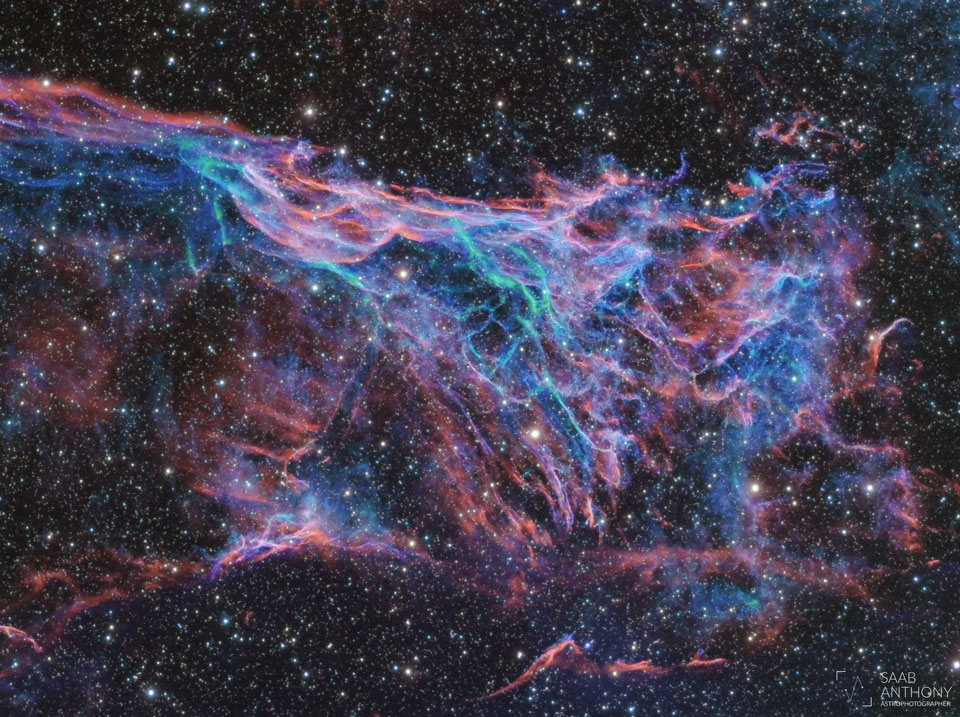弗莱明的三角星云
2021年7月27日
Fleming’s Triangular Wisp
Image Credit & Copyright: Anthony Saab
Explanation: Chaotic in appearance, these tangled filaments of shocked, glowing gas are spread across planet Earth’s sky toward the constellation of Cygnus as part of the Veil Nebula. The Veil Nebula itself is a large supernova remnant, an expanding cloud born of the death explosion of a massive star. Light from the original supernova explosion likely reached Earth over 5,000 years ago. The glowing filaments are really more like long ripples in a sheet seen almost edge on, remarkably well separated into the glow of ionized hydrogen atoms shown in blue and oxygen in red hues. Also known as the Cygnus Loop and cataloged as NGC 6979, the Veil Nebula now spans about 6 times the diameter of the full Moon. The length of the wisp corresponds to about 30 light years, given its estimated distance of 2,400 light years. Often identified as Pickering’s Triangle for a director of Harvard College Observatory, it is also named for its discoverer, astronomer Williamina Fleming, as Fleming’s Triangular Wisp.
Tomorrow’s picture: ring of fire galaxy
弗莱明的三角星云
影像提供与版权: Anthony Saab
说明: 这些位在地球天空中的天鹅座方向,外观紊乱纠结的激震明亮云气丝,为面纱星云的一部分。面纱星云本身则为大型的超新星遗迹,是大质量恒星爆炸死亡所产生的扩张碎片云。来自这例超新星爆炸的光,可能在5,000多年前传到地球。而此剧变事件激发的星际激震波,犁过太空扫起和激发星际物质。这些明亮云气丝其实较像是近乎侧向的物质层内之长长涟漪,而在空间上也非常精采的分成电离氢(红)、硫(绿)和氧(蓝)等辐射层。亦名为天鹅座环或NGC 6979的面纱星云,现在的跨幅将近有3度(6个满月)。以它大约2,400光年的距离来换算,长度约为30光年。这片经常称为皮克林三角星云的云气丝(皮克林为哈佛学院天文台的前主任),编录号为NGC 6979;除此之外,它也因发现它的天文学家威廉敏娜·弗莱明,而有弗莱明三角星云的称号。 (Pickering’s Triangle 皮克林三角星云; Fleming’s Triangular Wisp 威廉敏娜·弗莱明三角星云)
明日的图片: ring of fire galaxy

